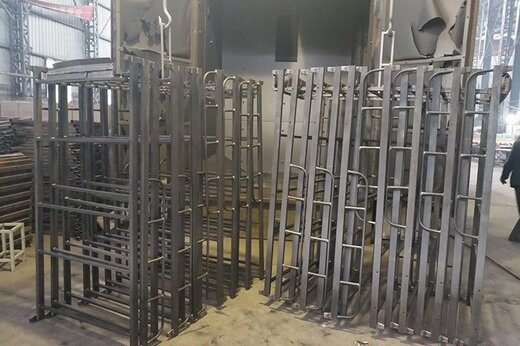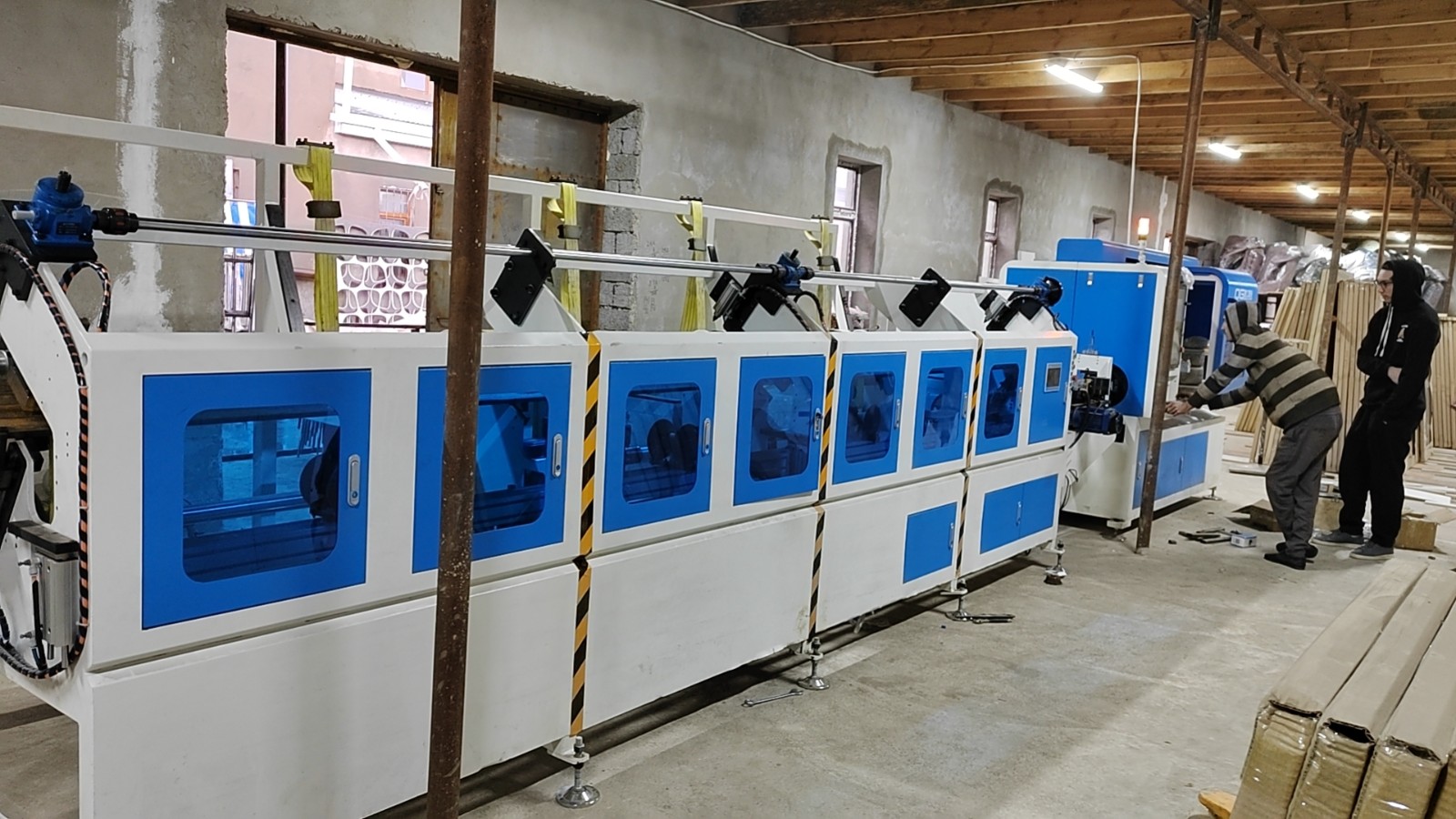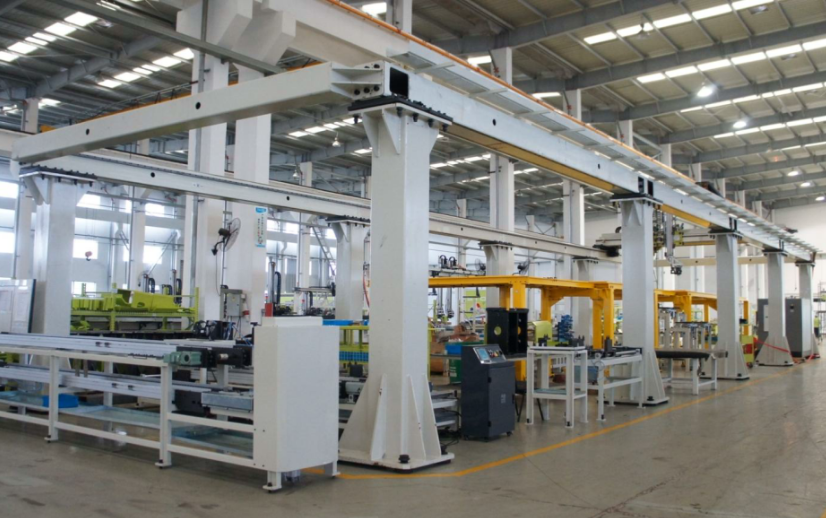With the advancement of modern manufacturing technology, high-precision and high-efficiency equipment such as laser tube cutting machines, tube bending machines and laser welding machines have gradually become the core equipment in the production of metal bed frames. This article will focus on the working principles, advantages of laser tube cutting machines, pipe bending machines and laser welding machines in the production of metal bed frames, and how to achieve a more efficient production process through their application.

1. Application and advantages of laser tube cutting machines
1. 1Working principle of laser tube cutting machines
Laser tube cutting machines use high-power laser beams to cut metal pipes. Laser tube cutting machines are usually equipped with CNC systems, which can automatically adjust the cutting path according to the design drawings to achieve cutting of different shapes and sizes.
Compared with traditional mechanical cutting methods, laser tube cutting machines have higher cutting accuracy, flexibility and speed.
1.2Advantages of laser tube cutting machines
High-precision cutting: Laser tube cutting machines can provide extremely precise cutting effects, with an error of only about 0.1mm. This is crucial for products such as metal bed frames that require high dimensional accuracy.
Complex shape cutting: Laser tube cutting machines can perform complex two-dimensional or three-dimensional cutting as needed. This allows designers to perform various fine cutting work on the metal tubes of the bed frame, improving the product's appearance design and functionality.
Efficient production: The laser tube cutting machine has a fast cutting speed, which reduces downtime in production and improves production efficiency.
Reduce waste: Since there is almost no tool wear during the laser cutting process, the cutting edge is smooth and there is less waste.
1.3.Application examples of laser tube cutting machines
In the production of metal bed frames, laser tube cutting machines are usually used to cut the support tubes, frame tubes and other key components of the bed frame.

2. Application and advantages of pipe bending machines in the production of metal bed frames
2.1 Working principle of pipe bending machines
Pipe bending machines are mainly used to bend metal pipes through certain mechanical effects. The operation of the pipe bending machine is usually controlled by a CNC system. The operator can input the designed bending angle, radius and other parameters, and the equipment will automatically adjust.
According to different functions and needs, there are different types of pipe bending machines. In the production process of metal bed frames, pipe bending machines are mainly used to process support tubes or frame tubes that need to be bent.
2.2 Advantages of pipe bending machines
Precise control of bending angles: pipe bending machines can accurately control the bending angles and radius of pipes according to the set program, thereby ensuring the precise docking of bed frame components. Pipe bending machines have high repeatability and precision and are suitable for mass production.
Improve production efficiency: Through the automated control of the CNC system, pipe bending machines can efficiently complete a large number of pipe bending tasks, reducing manual intervention and operation time.
Avoid material waste: Since pipe bending machines can perform precise bending according to design requirements, errors that may occur in traditional manual operations are avoided, thereby reducing waste and resource waste.
Enhance product structural stability: By using pipe bending machines for precise pipe bending, the overall stability and durability can be enhanced.
2.3 Application examples of pipe bending machines
In the production of metal bed frames, pipe bending machines are often used to produce bed frame support tubes with curved parts. In particular, pipe bending parts that require a large range or special shapes, such as the edge frame or reinforcement parts of the bed frame, pipe bending machines can efficiently and accurately complete this task.
3. Application and advantages of laser welding machine in the production of metal bed frame
3.1 Working principle of laser welding machine
The laser welding machine uses a high-energy laser beam as a heat source. By precisely controlling the laser beam to irradiate the metal surface, the metal is partially melted to form a molten pool. The laser welding process is usually controlled by a computer numerical control system, which can adjust the welding parameters very accurately, including laser power, welding speed, etc.
Compared with traditional welding methods, laser welding has higher heat input accuracy, can weld finer seams, and the metal deformation after welding is small.
3.2 Advantages of laser welding machine
High-precision welding: The laser welding machine can provide extremely high welding accuracy, small welding gaps, smooth seams, and is suitable for precision processing.
Small heat-affected zone: Due to the high power density of the laser welding process, the heat-affected zone generated during welding is small, so that the original strength and appearance of the metal can be maintained.
High production efficiency: The laser welding machine has a fast welding speed and can be operated automatically, which reduces manual intervention and improves production efficiency.
Increase connection strength: The joint strength of laser welding is high, which can effectively improve the overall stability and durability of the bed frame.
3.3 Application examples of laser welding machines
In the production of metal bed frames, laser welding machines are often used for welding connections between various components. For example, in the connection between the support tube and the frame of the bed frame, the laser welding machine can provide a smooth weld joint, which not only looks beautiful, but also ensures the stability and firmness of the connection.

Conclusion
Through the synergy of these high-tech equipment, the production of metal bed frames has not only improved production efficiency, but also greatly improved the quality and precision of the products, enabling manufacturers to gain an advantage in the highly competitive market.

